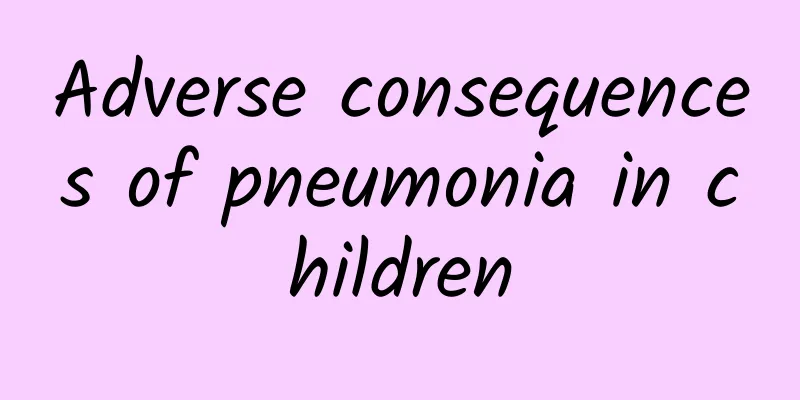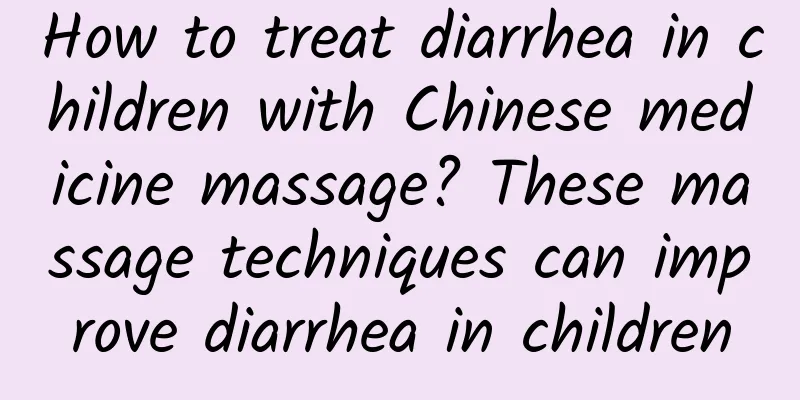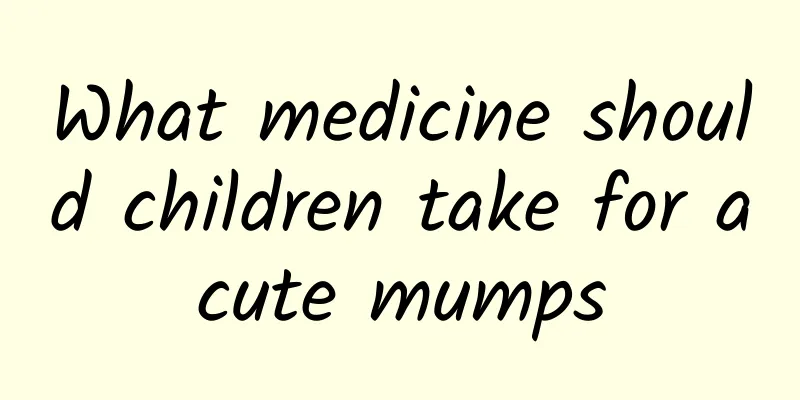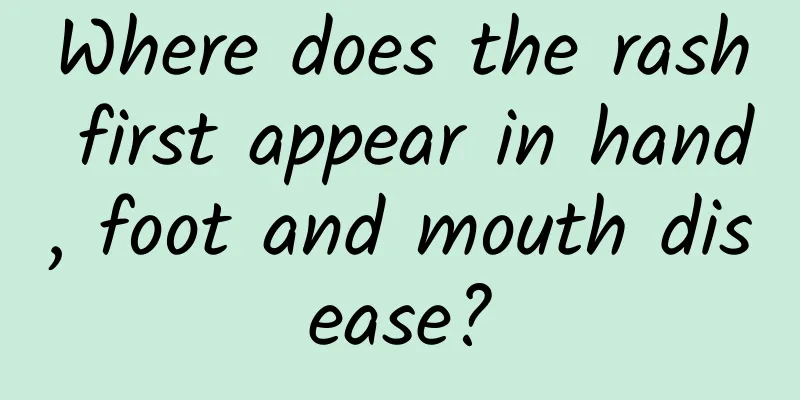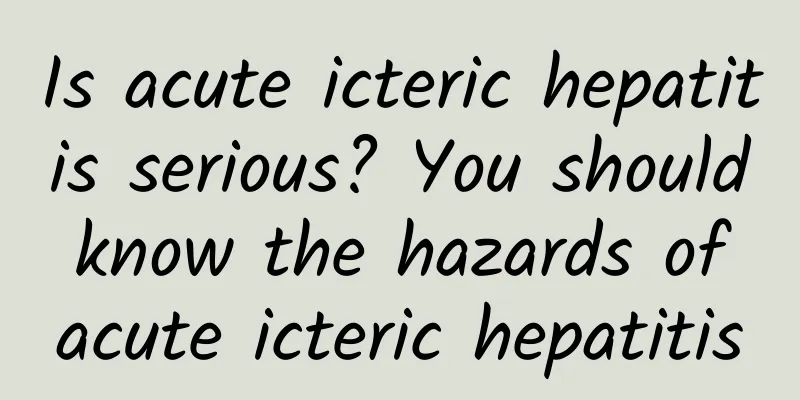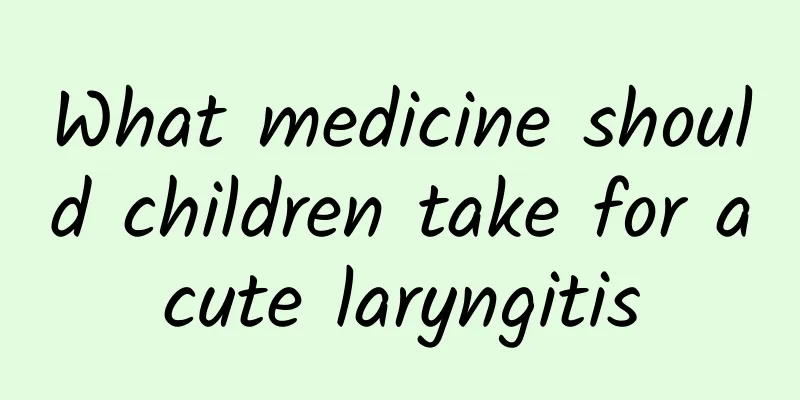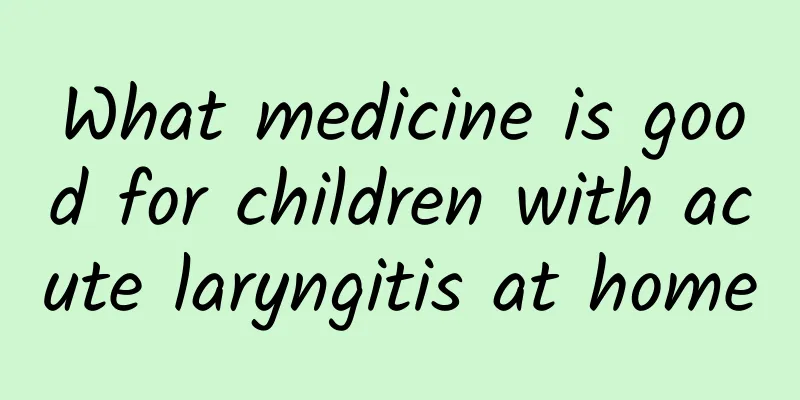What is the difference between pneumonia and the common cold? Five common symptoms of pneumonia in children
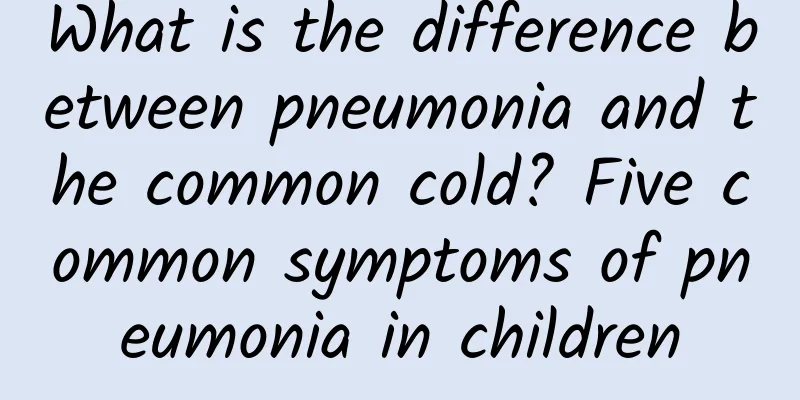
|
Pneumonia is a disease we are familiar with, and the incidence rate is higher among children. After a child becomes ill, we must make an accurate judgment based on the child’s symptoms, especially to distinguish it from a cold and provide symptomatic treatment. Symptoms of pneumonia in children 1. Fever: Children with pneumonia usually have fever symptoms, with body temperatures above 38 degrees and lasting for two or three days. Antipyretics can only temporarily reduce body temperatures for a while, and then they rise again soon. Although children with colds also have fever, their body temperatures are mostly below 38 degrees and last for a short time, so the effect of antipyretics is more obvious. But at the same time, we should also be wary of pediatric pneumonia without fever. Babies with pneumonia may have a very high body temperature, but they may not have a fever, or even have a lower temperature than normal. The length of the fever cannot be used as a basis for judging pneumonia. Some babies develop pneumonia after only two days of fever, while some babies have a fever for a week and it is not caused by pneumonia. Therefore, fever alone cannot determine whether a child has pneumonia, and it needs to be judged in combination with other aspects. 2. Cough and breathing: To determine whether the child has pneumonia, it is necessary to see whether the child has cough, wheezing and difficulty breathing. Cough and wheezing caused by colds and bronchitis are mostly paroxysmal, and generally do not cause difficulty breathing. If the cough and wheezing are severe, the respiratory rate will increase when at rest (i.e. 60 breaths/minute for infants under 2 months old; 50 breaths/minute for infants 2-12 months old; 40 breaths/minute for children 1-5 years old), the nostrils on both sides will open one by one, and the lips will turn blue or purple. Once the above symptoms appear, it indicates that the condition is serious and should not be delayed. More than 50% of the pathogens of viral pneumonia are respiratory syncytial virus, which accounts for one-third of the total number of hospitalizations for pneumonia in children. It is common in winter and spring. The most typical age of onset is 6 months to 3 years old. These children often have an acute onset, first with cold symptoms, which last for about 3 days, and show low fever (measured body temperature around 38), clear nasal discharge, and cough. About 60% of children may not have a fever. After 2-3 days, the cough worsens, and the breathing becomes fast and shallow, up to 60-100 times per minute. The most prominent symptoms are wheezing, holding back, and prolonged exhalation. Sometimes the sound of wheezing can be heard without a stethoscope, as long as you are close to the child, and the child is in great pain. 3. Mental state: In order to detect pneumonia in children in time, careful mothers should also pay attention to the mental state of their children. If the child is in good spirits, can play, and loves to laugh while having a fever, coughing, and wheezing, it indicates that the possibility of pneumonia is very small. On the contrary, if the child is in a poor mental state, has blue lips and lips, is irritable, cries or is drowsy, has convulsions, and a few children may have delirium, it means that the child is more seriously ill and is more likely to have pneumonia. In the early stages of pneumonia, the child may not have obvious changes in spirit, or he may be in a poor mental state. 4. Appetite: Pneumonia can significantly reduce appetite. Children with pneumonia will not eat or will cry and be restless when feeding. If the child is diagnosed with pneumonia, breastfeeding and feeding should continue, and the child should drink more soup. If the child has a decreased appetite, small meals should be taken frequently. Breastfeeding infants should increase the number of feedings per day to enhance nutrition and physical strength. 5. Chest: Because children's chest walls are thin, sometimes bubbling sounds can be heard without a stethoscope, so careful parents can listen to their children's chests when they are quiet or asleep. When listening to a child's chest, the room temperature must be above 18 degrees. Take off the child's shirt, gently place your ears against the chest wall on both sides of the child's spine, and listen carefully. Children with pneumonia will hear "gurgling" and "gurgling" sounds when they inhale. Doctors call them fine bubbling sounds, which are important signs of lung inflammation. At the same time, carefully observe whether the child has chest depression (when inhaling, the edges of the ribs on both sides are sunken and rise and fall with breathing). If this happens, the child needs to be sent to the hospital immediately for diagnosis so that timely treatment can be given. Diagnosis of pneumonia in children One measurement: refers to measuring the child's body temperature frequently. If a child has pneumonia, the body will continue to have a fever, and the temperature is generally above 38 degrees Celsius, and the child can only take antipyretics for short-term relief. Second check: The second check is to check the child's throat and breathing. If a child has pneumonia, he will have rapid wheezing and severe coughing, and sometimes it will be difficult to breathe. We also need to check the child's spirit. If a child has pneumonia, his spirit will be very bad, he will be depressed, and he will cry easily, want to sleep but wake up easily. Third, listen: Parents can bend over and listen to their child’s chest wall in a quiet environment after the child falls asleep, because most children with pneumonia will make a "gurgling" sound in their chest wall. The difference between pneumonia and the common cold 1. Take the temperature: Pneumonia in children is mostly accompanied by fever, and the temperature is mostly above 38°C and lasts for a long time. Even if antipyretics are used, the temperature can only subside temporarily and then recur again. Children also have fever when they have a cold, but it usually lasts for a shorter time, and the use of antipyretics to control the body temperature is more effective. 2. Look at the symptoms: Look at the cough and breathing conditions: Children with pneumonia mostly have severe coughing or wheezing, and the degree is severe, and can cause breathing difficulties; coughing or wheezing caused by colds and bronchitis is generally mild and will not cause breathing difficulties. (1) Look at the diet: When a child has pneumonia, he or she will have a poor appetite, will not like to eat, will not drink milk, and will often cry and be restless. When a child has a cold, his or her diet will be basically normal, or he or she may eat or drink slightly less, but the situation is generally not very serious. (2) Look at the mental state: When a child has pneumonia, his mental state is generally not very good, and he is prone to irritability, crying, drowsiness, etc.; when he has a common cold, his mental state is generally better, and he can eat and play. (3) Sleep: Children with pneumonia tend to be sleepy but wake up easily, cry a lot, and have a tendency to cough more at night. When children have a cold, their sleep is generally normal. 3. Listen to the sound: Because the child's chest wall is thin, it is easier to hear the bubbling sound in the lungs. When the child is quiet or asleep, parents can put their ears close to the chest wall on both sides of the baby's spine and listen carefully. If you hear a "gurgling" or "gurgling" sound (medically known as "bubbling sound", which is also an important sign of lung inflammation), it means that the child has pneumonia. This sound is generally not heard when the child has a cold. |
>>: What causes neonatal jaundice? 5 causes of neonatal jaundice
Recommend
How to correctly prevent pneumonia in children
Neonatal pneumonia is the most common severe resp...
Does it cost a lot to cure diarrhea in children?
Does it cost a lot to cure diarrhea in children? ...
What are the misunderstandings about the treatment of children's colds? Several key points for nursing after children have a cold
Colds are common in children, especially in autum...
What is Hirschsprung's disease? Is it easy to treat?
Hirschsprung's disease is a congenital diseas...
Is the baby's loss of appetite caused by emotions? What are the ways to increase the baby's appetite?
The incidence of anorexia in children is not low,...
How to prevent kidney disease in children
How to prevent kidney disease in children? The ha...
What are the dangers of Kawasaki disease
There are many diseases around us. If they are no...
How to treat acute laryngitis in children
Acute laryngitis in children requires immediate m...
Treatment of ADHD in children with medication
Drug therapy is one of the effective means of tre...
What should you pay attention to when you have mumps?
After being infected with mumps, the dietary prec...
Do children with pneumonia need antibiotics? 7 tips for preventing and caring for pneumonia
Pediatric pneumonia is the most common respirator...
What to do if a child has repeated fever due to pneumonia? What medicine to take?
Children with pneumonia and recurrent fever need ...
What should I do if my five-month-old baby has a cough? What are the methods to relieve the cough of a five-month-old baby?
If a five-month-old baby has a little cough, it m...
Premonition of systemic failure
Systemic failure, it sounds like a scary word, bu...
What to do if your 3-year-old baby has a severe cough
A 3-year-old baby is relatively easy to take care...
